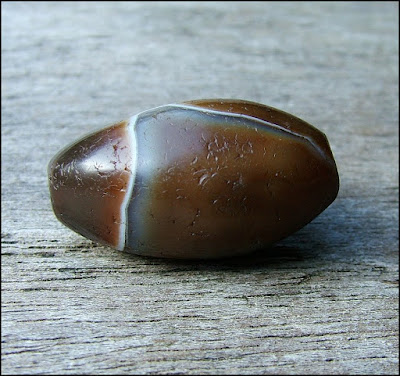Thursday, October 30, 2008
Tuesday, October 28, 2008
Monday, October 27, 2008
Friday, October 24, 2008
Thursday, October 23, 2008
Thursday, October 16, 2008
Tuesday, October 14, 2008
Wednesday, October 08, 2008
A damaged ancient dZi bead. Sourced in Nepal from someone who said they dug it up on their land. Pure dZi are rarely seen so fat. Three complete eyes still remain on this bead but it is unclear how many eyes this bead once had. The stylised eye above appears to have horns, and the decoration can be seen to penetrate at least 1 mm. If this bead was whole it would have been as much as 80 mm in length. size 31.55 mm x 19.58 mm.
Monday, October 06, 2008
...
Above: A newly created dZi bead from Taiwan with red blood spots or 'Martik' in the Tibetan language. Blood spots (iron inclusions) are often looked for by Tibetans, as a criteria to help identify ancient dZi. However, the majority of ancient dZi do not display them. Tibetans believe that the appearance of these tiny red spots is an auspicious sign. And that the more you wear the bead, the more likely these spots will 'grow'. A great many ancient dZi beads will display blood spots, but it is also clear that Taiwanese bead makers are able to replicate this. Blood spots or 'cinnibar' (a term used by Taiwanese dealers and collectors) are not a reliable indication that a bead is ancient. New beads that display blood spots will carry a higher premium than those that don't. Particularly beads that clearly show 'red' spots (as seen above) and not the more common 'brown' inclusions that are often seen on new Taiwanese dZi (see below).
Above is a new dZi displaying the Lotus and Vase decoration. The vase (Bumpa) is used in Tibetan ritual to confer empowerment. It is also possible that this symbol is a stupa or chorten. The stupa represents the enlightened mind of a Buddha.
Subscribe to:
Comments (Atom)

























